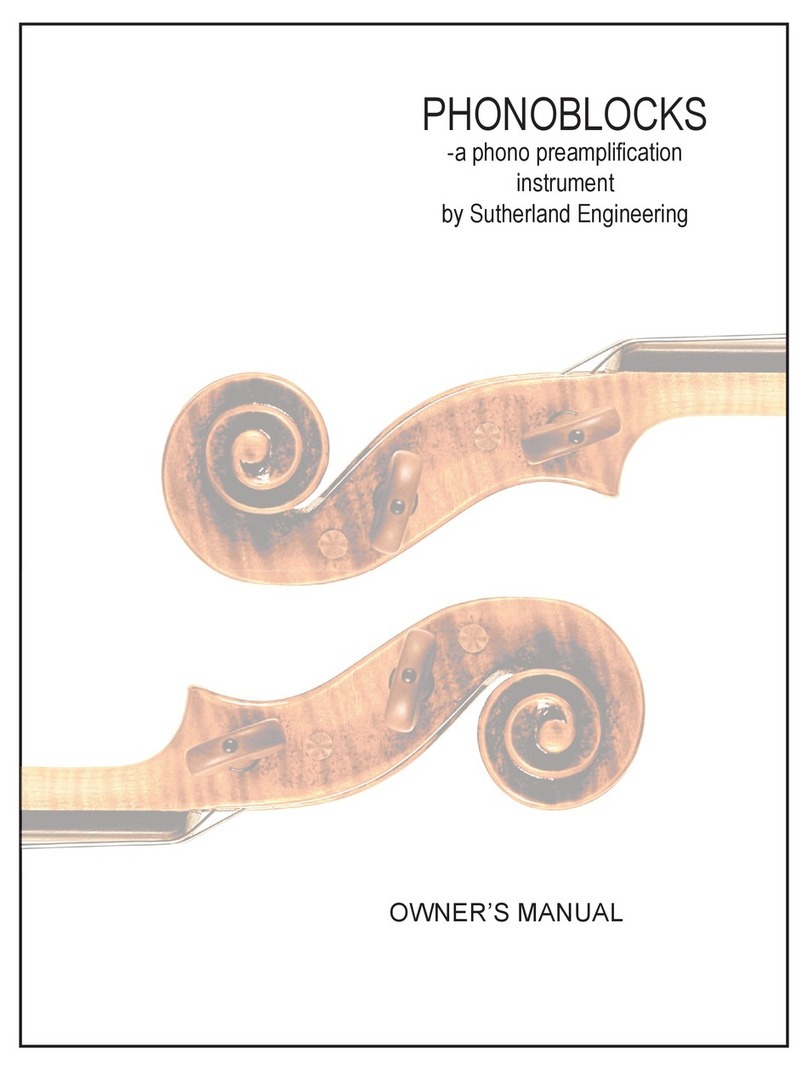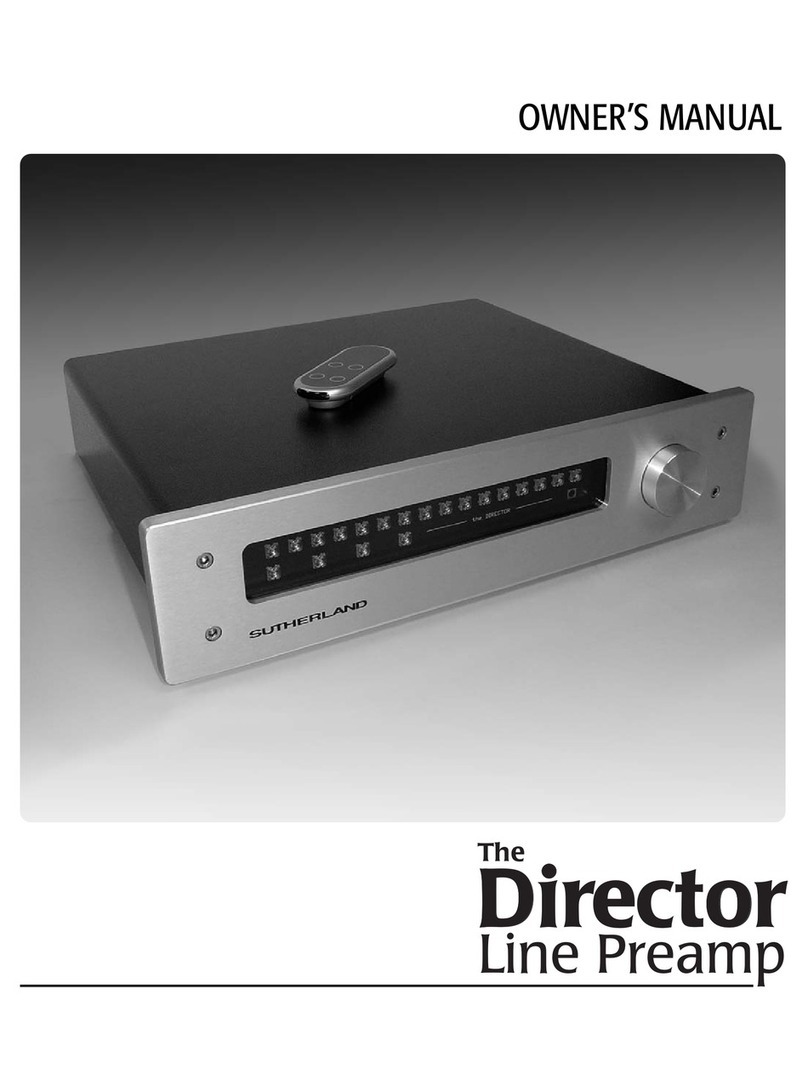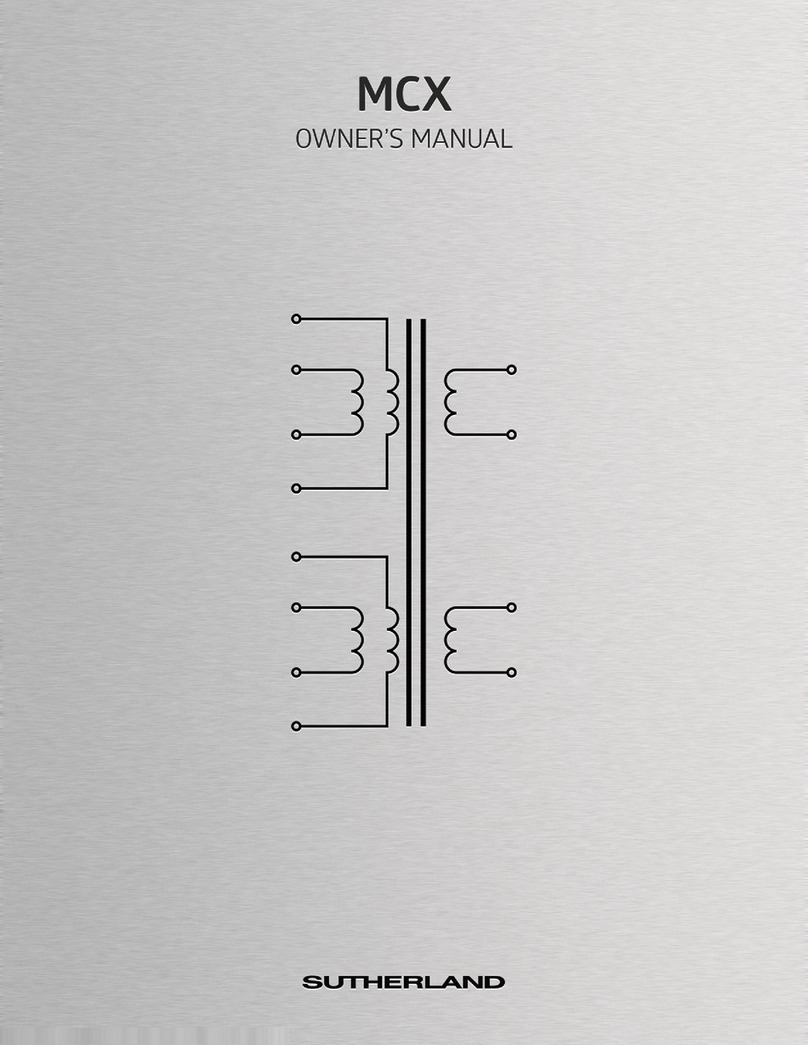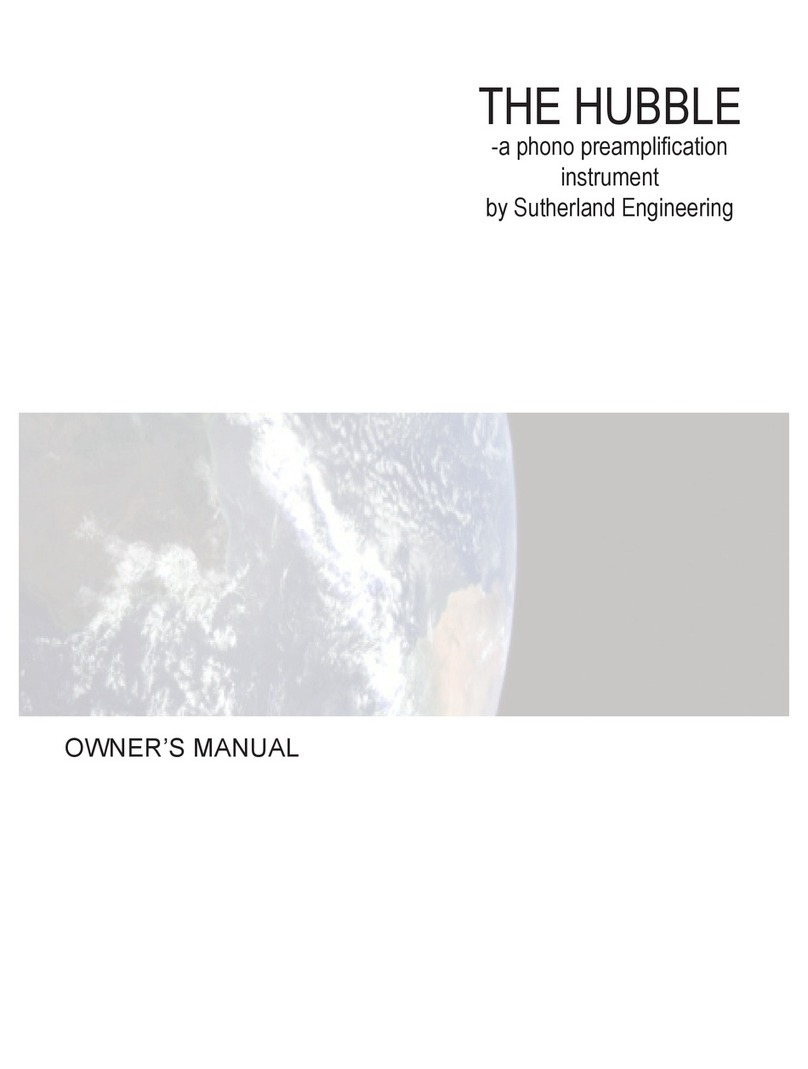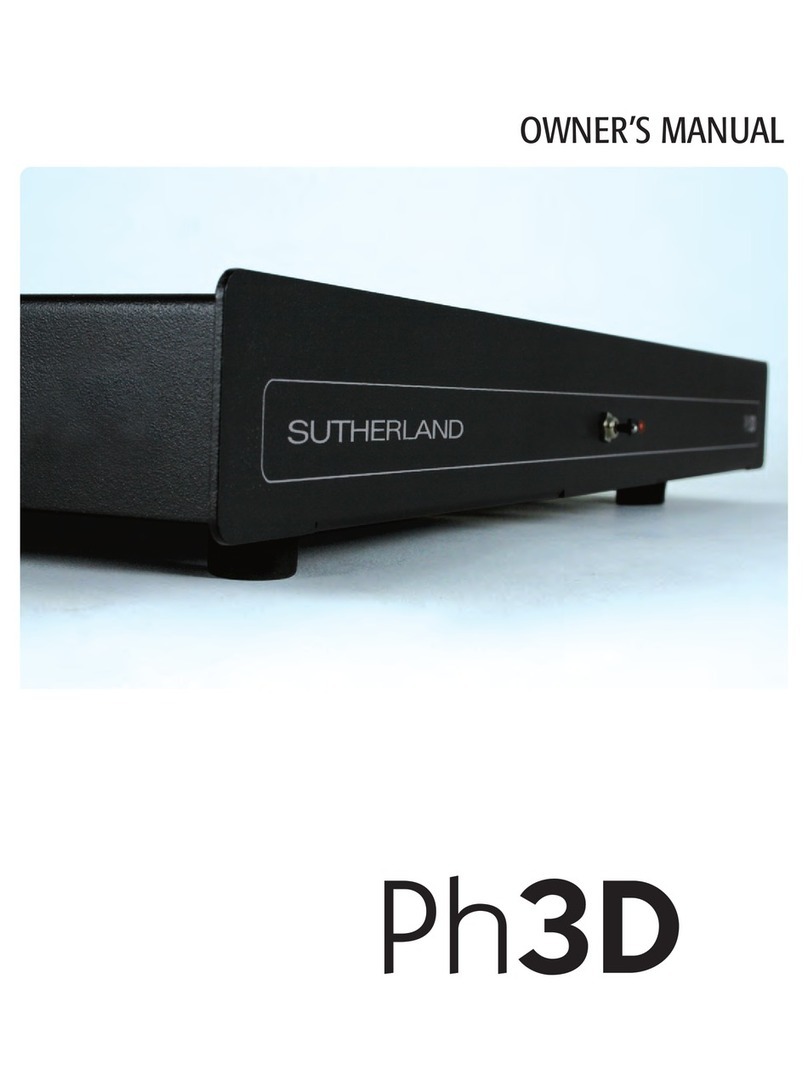Congratulations! You now own the quietest phono
preamp you’ll ever hear. Please take a few minutes
to review the specifications, setting options and
highlights for your easy-to-operate Sutherland Ph.D.
Although designer Ron Sutherland had already
achieved Class A performance with the AcousTech
Ph-1 phono preamp, he knew there was room to
improve while still keeping the manufacturing cost rea-
sonable. In designing the Ph.D., Sutherland focused on
improving the purity of the power source and on lowering
the background noise floor. Both
goals are interrelated.
An amplifier does not make the input signal “bigger.”
Instead, it uses the input signal to control the delivery
of power from a power supply. So the size of the
output signal comes entirely from the power supply.
The quality and purity of the power supply is an
essential foundation for creating a high-quality output
signal. Still, in many designs, the power supply is given
only casual consideration.
Consider that one of the noisiest components in your
home stereo is the incoming AC power. Even if it were
delivered to your home as idealized 60 Hz sine wave,
it would not stay that way long. One of the biggest
polluters is the audio power amplifier. It does not draw
current from the power line evenly. There is a large
current spike drawn when the sine wave reaches its
voltage extremes, while at other times current draw is
essentially zero. High-frequency harmonics and noise
are introduced into the same power line used for
sensitive phono preamplification. There are, of course,
many other factors that contribute to power line
distortion and noise.
While several preamplifier designs have aimed to
isolate the AC power line with varying degrees of
success, ultimate power supply purity cannot be
achieved without absolute elimination of the AC power
line. In the case of the Sutherland Ph.D., there is no
connection to the AC power line at all — period.
Instead, the power for the Ph.D. is 16 alkaline D cells.
In this application, the batteries have a useable lifetime
of over 800 listening hours. As they age, low-power
supply impedance is maintained by high-value storage
capacitance. And unlike designs that use rechargeable
batteries, the Ph.D. is not compromised and encum-
bered with battery-charging circuitry. In fact, one of the
surprising features of the Ph.D. is the absence of ANY
power connections on the back panel. It is totally isolat-
ed from any outside power noise.
To bring the sonic advantages of primary battery
power into a practical product required the development
of a sophisticated power management system. If
a conventional power switch were used on the Ph.D., it
is almost certain that it would sometimes accidentally
be left in the on position thereby draining the battery
life much faster than necessary. Instead, Sutherland
designed a power manager that monitors for a signal
from the turntable, or specifically the stylus. Once a
signal is detected, such as anytime the stylus is
stimulated by cleaning or contacting a record, the
Ph.D. will power-up for 30 minutes at which time signal
monitoring is inhibited to again avoid any impact on
the low-noise environment. From there, the unit
automatically looks for a signal every half-hour
(indicated by a yellow light flicker) for just a fraction of
a second. If it doesn’t find a signal, it will stay on for an
additional half-hour with a yellow light indicating that it
is preparing to turn off.
In designing the Ph.D., Sutherland concentrated on
eliminating needless power consumption. So as very
little power is used, very little heat is generated within
the components. There is essentially no temperature
rise and no need for “warm-up” time. The design also
has very little or no dc voltage across the signal-carrying
capacitors, so that dielectric forming is not an
issue. If you do prefer to power-up (notice, we did not
say “warm-up”) the Ph.D. before listening, simply tap
the cartridge headshell or brush the stylus. The unit
will power-up, and you'll be set to jam!
Hear the music, not the noise.
YOUR SUTHERLAND Ph.D.
